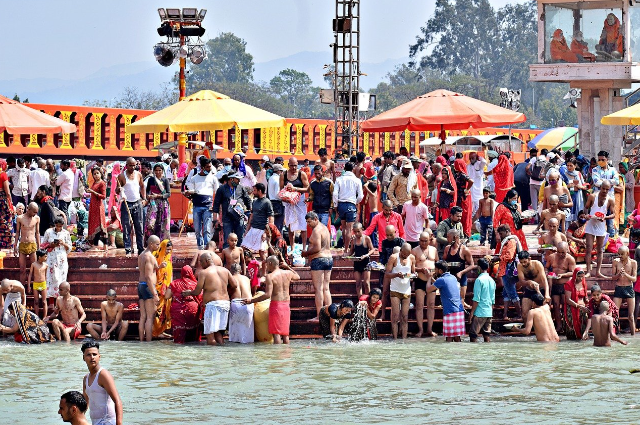
Image by Rajesh Balouria from Pixabay
The quality of Ganga river water in Haridwar has raised concerns once again. Recent tests conducted by the Uttarakhand Pollution Control Board (UKPCB) revealed that the water falls under the 'B' category, making it unsuitable for drinking purposes but safe for bathing. This classification highlights the ongoing challenges in maintaining the river's purity despite its spiritual and ecological significance.
Monthly Testing Highlights Water Quality
To monitor pollution levels, the UKPCB conducts monthly tests of Ganga water at eight locations near Haridwar along the Uttar Pradesh border. These evaluations are essential to understanding the river's health and ensuring compliance with environmental standards. The tests carried out in November, showed that the water does not meet the stringent standards required for safe drinking.
Understanding the Categorization of River Water
The Central Pollution Control Board (CPCB) classifies water quality into five categories, ranging from 'A' to 'E':
- Category A: The cleanest, indicating water fit for drinking after basic disinfection.
- Category B: Safe for activities like bathing but unsuitable for drinking.
- Category C, D, and E: Increasing levels of contamination with 'E' being the most polluted and unsafe for any direct human use.
The 'B' classification of Ganga water in Haridwar suggests that while it is free from extreme levels of pollutants, it still contains impurities that make it unfit for consumption.
Key Indicators Behind the Classification
Rajendra Singh, the regional officer of UKPCB, elaborated on the methodology used for classification. He explained that the assessment is based on four critical parameters:
- pH Levels: Indicating the acidity or alkalinity of the water.
- Dissolved Oxygen: Essential for aquatic life and a marker of water's ecological health.
- Biological Oxygen Demand (BOD): Reflecting organic pollution levels.
- Total Coliform Bacteria: Indicating contamination from fecal matter or other harmful sources.
According to Singh, the test results show that Ganga water meets the standards for safe bathing as it falls under category 'B.' However, the presence of bacteria and other pollutants prevents its classification as drinkable.
Implications and Need for Action
The findings highlight a dual reality: while the Ganga remains safe for ritualistic and recreational purposes like bathing, its potential as a source of potable water is severely compromised. This underscores the urgency of implementing stricter pollution control measures.
Efforts like sewage treatment plants, industrial waste management, and public awareness campaigns are crucial to improving the river's quality. Only through sustained and collective action can the Ganga be restored to its original state by ensuring it serves as both a spiritual and practical resource for generations to come.
Concerns Over Water Pollution: A Local Priest's Perspective and Impact of Human Waste
Ujwal Pandit, a local priest, has voiced his worries about the rising levels of pollution in the water bodies, particularly the Ganga River. He emphasizes that the water's purity is compromised primarily due to human waste. According to him, Ganga water has long been revered for its healing properties, claiming that bathing in it can cure various ailments including serious diseases like cancer. He believes that if one were to collect Ganga water today and analyze it a decade later, it would still show no signs of impurity—provided that human contamination is addressed.
The Urgent Need for Change
Pandit insists that the current reports regarding the pollution levels in Ganga water are directly linked to human activities. He calls for immediate action to rectify this situation, highlighting the necessity for collective efforts to safeguard the river's density. His statements reflect a deep concern not just for the river itself but also for the health and well-being of the community that relies on it.
Wider Implications: Pollution in Indian Rivers
The issue of water pollution extends beyond the Ganga River. The Yamuna River, particularly in Delhi, has also faced severe pollution challenges in recent years. On December 1, alarming scenes were reported as a thick layer of toxic foam appeared on the river's surface. This phenomenon raises significant health concerns for those living nearby and underscores the urgent need for effective measures to combat pollution.
In Ujwal Pandit's insights shed light on a critical environmental issue affecting not only sacred rivers like the Ganga but also other vital water bodies in India. The call for action is clear: without significant changes to our waste management practices and greater awareness of our impact on these rivers, both public health and cultural heritage are at risk.
. . .
References:
